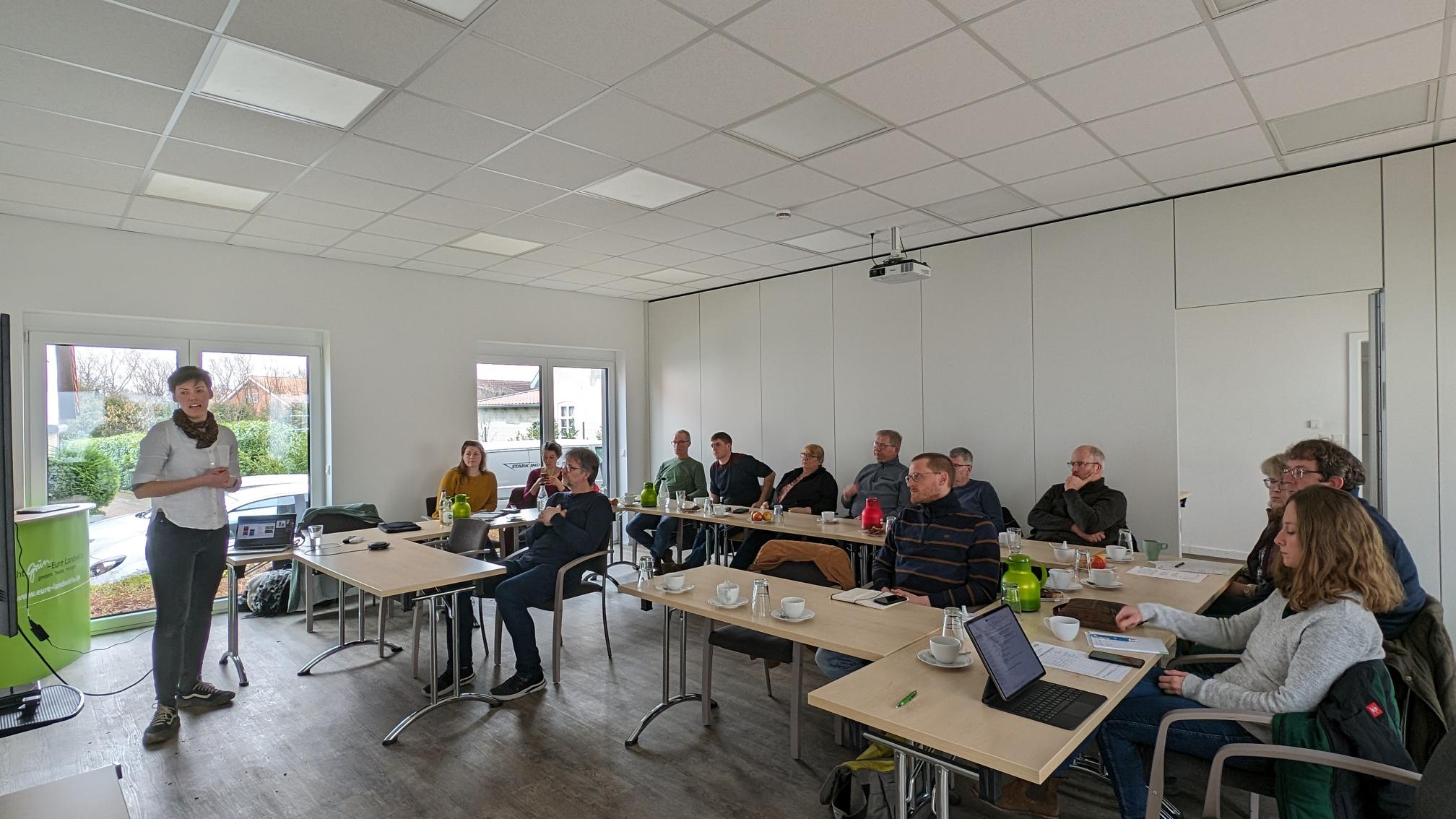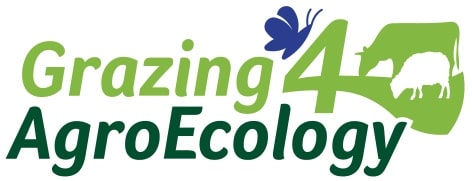

Calculating the Carbon Footprint of Milk and the Influence of Grazing – An In-depth Look with Dr. Friederike Fenger (Thünen Institute, Organic Farming)
On February 13th, a group of German farmers delved deeply into climate assessment and carbon footprint calculation for pasture-based dairy farms. This complex field extends far beyond CO2 emissions.
Dr. Friederike Fenger introduced how data collection works, what calculation tools are available, and emphasized the importance of looking beyond climate issues to maintain a holistic view of farm activities.
For instance, farm fertilizers play a crucial role in milk production: when animals have access to pasture, emissions from storage and spreading, as well as ammonia emissions (through automatic separation of urine and feces), are reduced.
Other factors include the sources of feed concentrates, land use change, and increasing cows’ milk yield – but only up to a certain point. A significant effect can be achieved by switching to grass-based milk production with low imported inputs.
Programs like the German PRO WEIDELAND label, which mandates GMO-free feeding, can reduce soy imports from Brazil, for example, thereby potentially minimizing rainforest deforestation.
Special attention is given to grass-based feeding, which helps lower emissions and reduce energy consumption. The feed quality of pasture grass is an efficient lever for reducing methane emissions per animal.
The sequestration potential of permanent grassland, which has been established for years, is not adequately assessed in a carbon footprint. In contrast, areas of temporary grassland with clover-grass are positively recognized for their high carbon storage capacity. This background must be understood when comparing footprints.
In short: Climate calculation tools are a good starting point, but the data calculation is based on IPPC estimates and does not easily reflect the complexity of a farm. It’s not just about the carbon footprint, but about a holistic understanding of environmental impacts such as biodiversity, nutrient surpluses, land use efficiency, and competition for food and land.
In the future, we should primarily use non-edible biomass (e.g., grass) to feed animals to reduce food competition with humans and close nutrient cycles.

